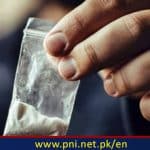ISLAMABAD-October 24 (Online): What occurs in the brain when we are deep in slumber? What are the different stages of sleep and what role do they play in learning and memory formation? What about in anxiety and pain? Do neurons and neurotransmitters also play a role? These are the questions we will tackle in this Special Feature, using the latest evidence available.
Scientists generally agree that there are four stages of sleep that we cycle through several times each night. The first three form the so-called non-rapid eye movement (REM) sleep and the fourth one is REM sleep — where dreams occur.
In the first non-REM stage, the body and brain transition from wakefulness to sleep. The brain changes its electrical oscillations from the active, wakefulness pattern of brainwaves into a slower rhythm.
Muscle tone throughout the body relaxes. This is the phase during which our bodies may twitch as we enter slumber.
The second non-REM stage involves a drop in the body’s temperature, the heartbeat and breathing become slower, and the brainwaves slow down further. Short bursts of electrical activity in the brain may still characterize this stage of sleep.
The third stage of non-REM sleep is the deep sleep stage, which our bodies need to wake up feeling refreshed and restored. In this stage, heart rate, breathing, and brain activity all drop to their lowest point.
One of the two main things that control sleep is the ensemble of “physical, mental, and behavioral changes that follow a daily cycle” — called circadian rhythms. The term “circadian” comes from the Latin circa, meaning “around” and dies, meaning “day.”
Circadian rhythms respond to the light-darkness cycle and are genetically predetermined, at least in part, and dictated by so-called biological clocks — proteins that interact within cells in every tissue and organ in the human body.
The suprachiasmatic nucleus, a structure in the brain formed by a group of about20,000 neurons, or nerve cells, coordinates all the biological clocks.
Secondly, the sleep-wake homeostasis also tracks a person’s need for sleep and dictates when they get sleepy. The so-called homeostatic sleep drive increases with the time that a person spends being awake. Its visible effects on brain activity and connectivity between neurons have been well documented.








